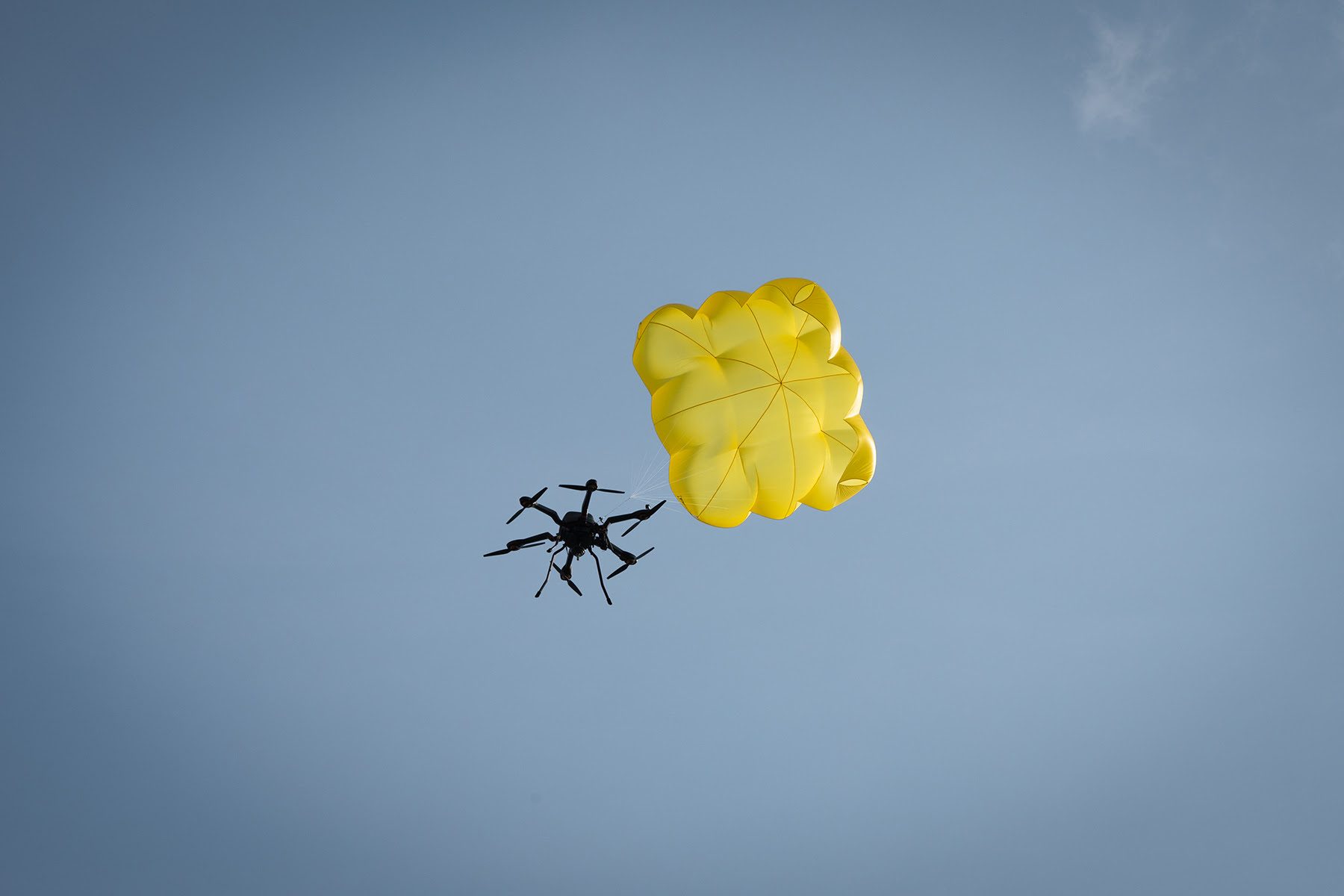Partnership between Acecore and Drone Rescue Systems introduces advanced parachute safety measures.
Acecore Technologies has partnered with Drone Rescue Systems to integrate new parachute systems that will improve both the safety and regulatory compliance of their drone platforms, Noa and Zoe. The collaboration brings autonomous, non-pyrotechnical parachute solutions to these drones, allowing them to meet strict safety requirements for more complex drone operations.

This new system ensures that Acecore’s drones now comply with Means of Compliance (MoC) Light-UAS.2512 (M2) and MoC Light-UAS.2511, which are essential for operations requiring specific safety protocols under European Aviation Safety Agency (EASA) regulations.
Key Benefits for Safety and Compliance
The integration of the Drone Rescue Systems parachutes offers several benefits:
- Increased Safety: The parachute system minimizes potential risks in case of a loss of control, helping contain the drone and preventing accidents.
- Regulatory Compliance: With the parachute system, Acecore drones meet the requirements for both SORA (Specific Operational Risk Assessment) and PDRA (Pre-Defined Risk Assessment) procedures, streamlining the process for obtaining flight permits.
- Peace of Mind: Drone operators can now focus on their operations knowing their equipment is equipped with the latest safety technology.
Jorrit Linders, CEO of Acecore Technologies, commented on the new partnership: “Coming from solely manually triggered parachute safety systems, we are happy to offer our customers next level operational safety with DRS’s autonomous parachutes. The system is non-pyrotechnical as well meaning it is easier to transport and handle. It is a shame you will never see all of this nice technology at play – hopefully.”
Technical Enhancements for Complex Operations
The parachute system is not just about compliance but also serves as a critical safety tool for operators engaged in high-risk or complex missions. By meeting MoC Light-UAS.2511, Acecore drones now feature enhanced containment. This ensures that, in the event of a loss of control, the drone remains contained and does not enter adjacent areas, significantly reducing operational risks.
Additionally, MoC Light-UAS.2512 standards help reduce the risk of ground impact by lowering the Ground Risk Class (GRC) score, further minimizing potential harm. This regulatory compliance provides operators with reliable mitigation strategies in case of unforeseen issues, improving the overall safety of drone operations.
Andreas Ploier, CEO of Drone Rescue Systems, emphasized the value of this partnership: “We often speak to customers who are concerned about flight permits or safety issues. As DRS we are thrilled to see Acecore drones flying through the skies equipped with our EASA-certified parachute systems. These drones, known for their strong craftsmanship, paired with the certified DRS parachute systems, ensure that you can rest assured about the safety of your aircraft, while you focus on your flight operations.”
A Step Forward for Drone Safety
This new parachute system highlights Acecore’s commitment to advancing operational safety and meeting regulatory demands. By integrating Drone Rescue Systems’ technology, Acecore drones are now better prepared to navigate the growing complexities of regulatory frameworks, ensuring safer skies for both operators and the public.
The collaboration is set to make it easier for drone operators to secure permits while providing added peace of mind in the event of unexpected issues during flight.
Read more:
- Archer First Response Systems, Drone Rescue Systems Complete Latest ASTM Standards for Drone Parachute Recovery Systems
- Fruity Chutes Drone Parachute Recovery Systems Partners with Matternet M2 for FAA Type Certification
- Drone Parachute: See Percepto’s Integrated Parachute in Action [VIDEO]

Miriam McNabb is the Editor-in-Chief of DRONELIFE and CEO of JobForDrones, a professional drone services marketplace, and a fascinated observer of the emerging drone industry and the regulatory environment for drones. Miriam has penned over 3,000 articles focused on the commercial drone space and is an international speaker and recognized figure in the industry. Miriam has a degree from the University of Chicago and over 20 years of experience in high tech sales and marketing for new technologies.
For drone industry consulting or writing, Email Miriam.
TWITTER:@spaldingbarker
Subscribe to DroneLife here.







Leave a Reply